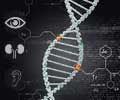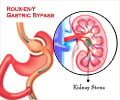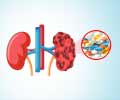Podocytes are specialized type of epithelial cells in the kidney, which get damaged in more than 90 percent of all chronic kidney disease cases.
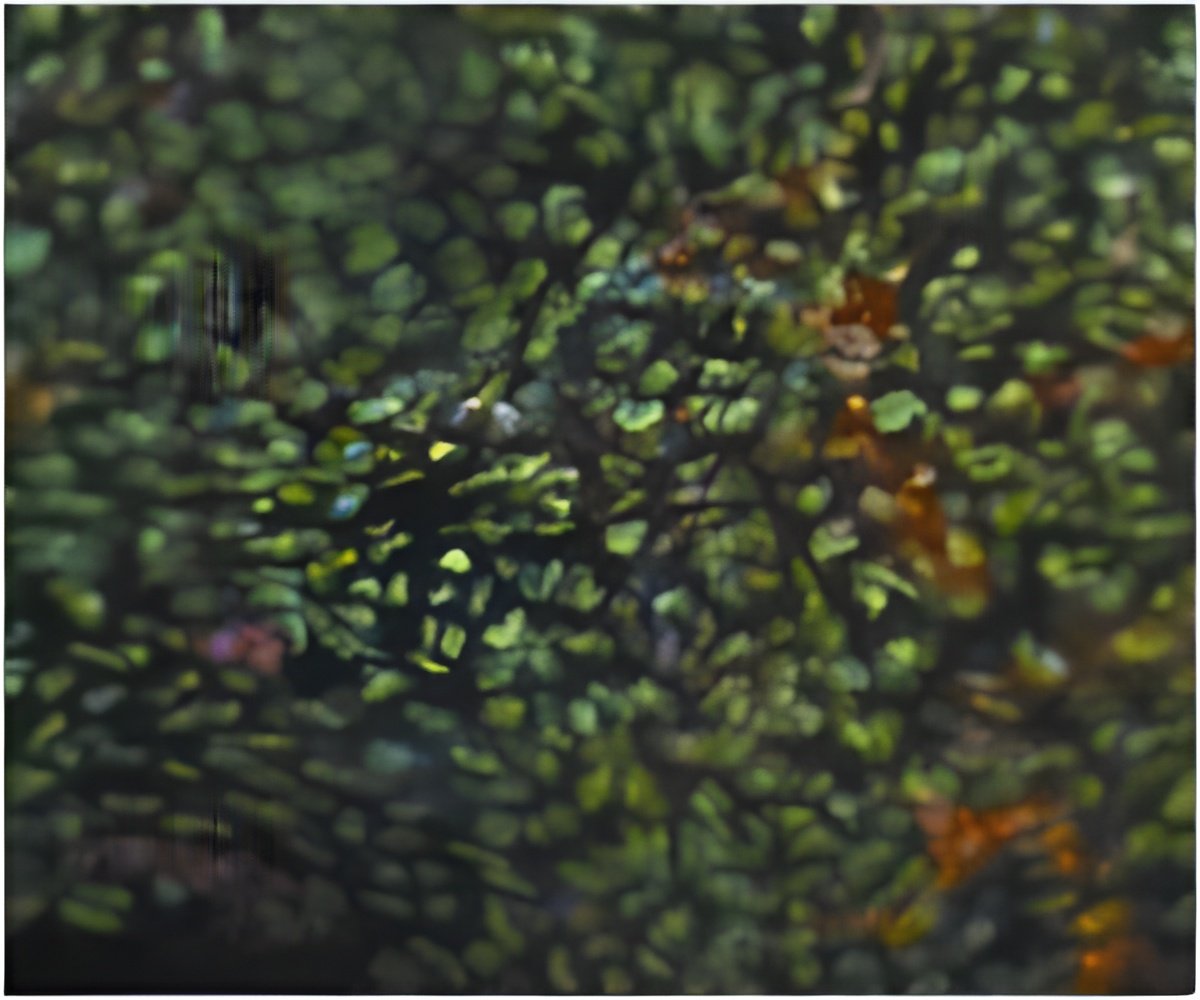
This finding is an important step toward one day therapeutically coaxing the cells to divide, which could be used to treat people with chronic kidney disease.
"Researchers have studied these cells for years, but the prevailing view has been that they don't renew themselves," said associate professor of medicine Steven Artandi, MD, PhD. "Now we've found that podocytes can enter and leave the cell cycle in response to certain common signaling pathways."
Artandi is the senior author of the study, which will be published online Dec. 4 in Nature Medicine. The first author of the work is former postdoctoral scholar Marina Shkreli, PhD, who is now at the Laboratory of Biology and Pathology of Genomes at the University of Nice in France.
Podocytes are found only in the kidney and are an integral structural component of its blood-filtering system. They stand shoulder-to-shoulder in a part of the organ called the glomerulus and wrap their long "feet" around the semi-permeable capillaries through which blood flows. Narrow slits between the feet allow small molecules, such as water and salts, to pass while blocking large proteins.
This filtering process is the first step to forming urine, and it is critically important -- even one missing cell can leave a gap that would allow unwanted molecules through the barrier. (Imagine wrapping your hands around a length of leaky garden hose so that the water seeps out between your fingers. Lift up one finger and you're liable to get sprayed in the face.)
"It used to be thought that you were born with podocytes, and you died with the same podocytes -- you don't make any more during your lifetime," said Artandi. The only exception was certain rare types of kidney disease in which the podocytes abandon their blood-filtration duties en masse to de-differentiate into less-specialized, dividing cells that little resemble their predecessors. As a result, the glomerulus collapses and the patients' kidneys begin to fail. One such disease is HIV-associated nephropathy, or HIVAN.
To understand more about kidney biology, Artandi and Shkreli investigated the role of a protein component of the telomerase complex called TERT. Although telomerase is best known as an enzyme involved in cell aging, recent research in Artandi's lab and others have shown that TERT also plays a role in many types of cellular regeneration.
The researchers found that temporarily increasing the expression of TERT in adult, otherwise healthy laboratory mice caused the formerly stolid podocytes to abruptly de-differentiate and begin dividing. As a result, the glomerulus collapsed in a way that resembles what happens in humans with HIVAN. Conversely, ceasing the overexpression allowed the cells to stop dividing, re-specialize and resume their normal functions.
When Artandi and Shkreli looked closely at the glomeruli in humans with HIVAN, they found that TERT expression was increased. Equally important, the Wnt signaling pathway, which is important in embryonic development and in the self-renewal of stem cells, was also activated. (Previous research in the Artandi lab has linked telomerase activity to the Wnt pathway.) Blocking Wnt signaling in a mouse model of HIVAN also stopped the podocytes from dividing and improved their function.
"The implication is that podocytes may utilize recognized pathways of regeneration to renew themselves throughout life," said Artandi. People suffering from chronic kidney disease may simply have worn out or outpaced their podocytes' capacity for renewal, he believes.
Now that the researchers know podocytes have the ability regenerate in response to common cellular signals, their next step is to learn whether this regeneration occurs in healthy animals and people. "If we can harness this regeneration," Artandi said, "we may one day be able to treat people with chronic kidney disease."
In addition to Artandi and Shkreli, other Stanford researchers involved in the study include medical resident Kavita Sarin, MD, PhD; graduate students Matthew Pech and Peggie Cheung; medical student Woody Chang; lab manager Stephanie Brockman; former research assistant Eunice Lee; research associate Frank Kuhnert, PhD; and associate professor of medicine Calvin Kuo, MD, PhD.
The research was funded by the National Institutes of Health, the Stanford School of Medicine, the Stanford Center on Longevity and the Glenn Laboratories for the Biology of Aging at Stanford. Information about Stanford's Department of Medicine, which also supported the work, is available at http://medicine.stanford.edu.
# # #
The Stanford University School of Medicine consistently ranks among the nation's top medical schools, integrating research, medical education, patient care and community service. For more news about the school, please visit http://mednews.stanford.edu. The medical school is part of Stanford Medicine, which includes Stanford Hospital & Clinics and Lucile Packard Children's Hospital. For information about all three, please visit http://stanfordmedicineSTANFORD, Calif. -- Damage to podocytes -- a specialized type of epithelial cell in the kidney -- occurs in more than 90 percent of all chronic kidney disease. Now researchers at the Stanford University School of Medicine have uncovered an unexpected pathway that reveals for the first time how these cells may regenerate and renew themselves during normal kidney function.
This finding is an important step toward one day therapeutically coaxing the cells to divide, which could be used to treat people with chronic kidney disease.
"Researchers have studied these cells for years, but the prevailing view has been that they don't renew themselves," said associate professor of medicine Steven Artandi, MD, PhD. "Now we've found that podocytes can enter and leave the cell cycle in response to certain common signaling pathways."
Artandi is the senior author of the study, which will be published online Dec. 4 in Nature Medicine. The first author of the work is former postdoctoral scholar Marina Shkreli, PhD, who is now at the Laboratory of Biology and Pathology of Genomes at the University of Nice in France.
Podocytes are found only in the kidney and are an integral structural component of its blood-filtering system. They stand shoulder-to-shoulder in a part of the organ called the glomerulus and wrap their long "feet" around the semi-permeable capillaries through which blood flows. Narrow slits between the feet allow small molecules, such as water and salts, to pass while blocking large proteins.
This filtering process is the first step to forming urine, and it is critically important -- even one missing cell can leave a gap that would allow unwanted molecules through the barrier. (Imagine wrapping your hands around a length of leaky garden hose so that the water seeps out between your fingers. Lift up one finger and you're liable to get sprayed in the face.)
This may be why previous researchers searching for signs of self-renewal in podocytes were unsuccessful, because any such renewal or replacement would likely need to be carefully orchestrated to avoid compromising the filtration system. As a result, scientists have been forced to conclude that the podocytes rarely, if ever, divided.
"It used to be thought that you were born with podocytes, and you died with the same podocytes -- you don't make any more during your lifetime," said Artandi. The only exception was certain rare types of kidney disease in which the podocytes abandon their blood-filtration duties en masse to de-differentiate into less-specialized, dividing cells that little resemble their predecessors. As a result, the glomerulus collapses and the patients' kidneys begin to fail. One such disease is HIV-associated nephropathy, or HIVAN.
The problem was, such a scenario doesn't make a lot of evolutionary sense -- particularly when other epithelial cells routinely regenerate themselves. "Podocytes are vitally important, and are also under enormous physical stress," said Artandi. "It's hard to understand why we would have such a vulnerable blood-filtration system."
To understand more about kidney biology, Artandi and Shkreli investigated the role of a protein component of the telomerase complex called TERT. Although telomerase is best known as an enzyme involved in cell aging, recent research in Artandi's lab and others have shown that TERT also plays a role in many types of cellular regeneration.
The researchers found that temporarily increasing the expression of TERT in adult, otherwise healthy laboratory mice caused the formerly stolid podocytes to abruptly de-differentiate and begin dividing. As a result, the glomerulus collapsed in a way that resembles what happens in humans with HIVAN. Conversely, ceasing the overexpression allowed the cells to stop dividing, re-specialize and resume their normal functions.
When Artandi and Shkreli looked closely at the glomeruli in humans with HIVAN, they found that TERT expression was increased. Equally important, the Wnt signaling pathway, which is important in embryonic development and in the self-renewal of stem cells, was also activated. (Previous research in the Artandi lab has linked telomerase activity to the Wnt pathway.) Blocking Wnt signaling in a mouse model of HIVAN also stopped the podocytes from dividing and improved their function.
"The implication is that podocytes may utilize recognized pathways of regeneration to renew themselves throughout life," said Artandi. People suffering from chronic kidney disease may simply have worn out or outpaced their podocytes' capacity for renewal, he believes.
Now that the researchers know podocytes have the ability regenerate in response to common cellular signals, their next step is to learn whether this regeneration occurs in healthy animals and people. "If we can harness this regeneration," Artandi said, "we may one day be able to treat people with chronic kidney disease."
Source-Eurekalert
 MEDINDIA
MEDINDIA

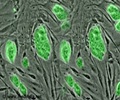

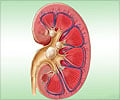
 Email
Email


